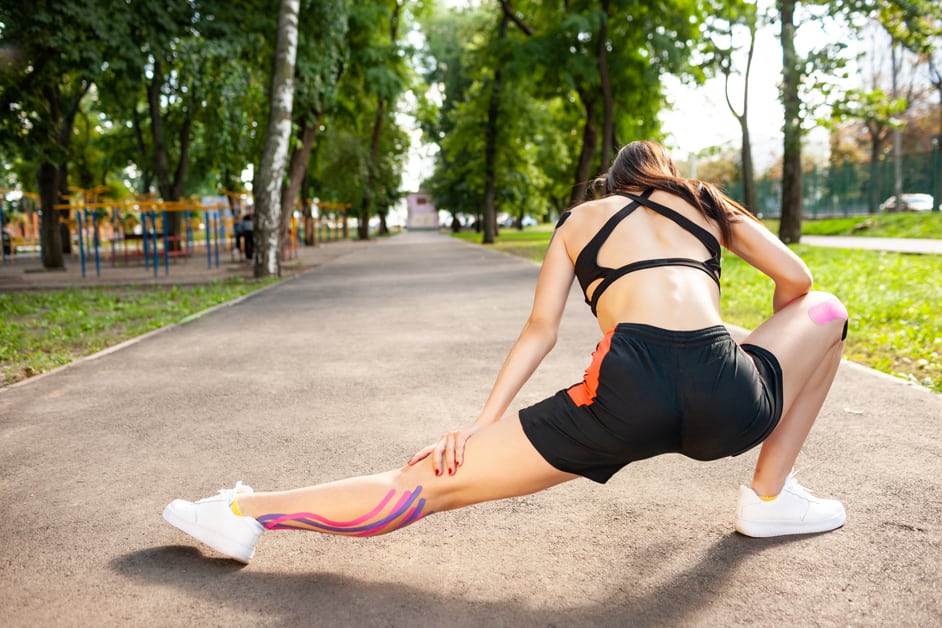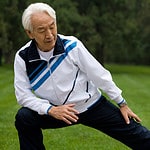Introduction
Struggling with sore knees? Not sure what to do? Mobility drills and foam rolling are two popular methods of relieving pain and discomfort. But, which one is best? This guide outlines each and explains their differences.
Mobility drills use exercises to strengthen and stretch muscles that cause knee pain. This can increase mobility and reduce knee discomfort. Foam rolling uses a foam roller to release muscle tension. This can lead to faster healing, and less pain and aches in the knees.
Both methods can be beneficial depending on the type of injury. They are excellent forms of treatment for various types of knee issues. Read on to understand when to use each alone or together.
Mobility Drills
Mobility drills can help those with knee pain. They work on joints and muscles, improving range of motion and flexibility. But, what are the pros and cons of using them? How do they compare to foam rolling? Let’s take a look!
Mobility drills can be used in combination with foam rolling. It can be an effective pain relief solution.
Benefits of Mobility Drills
Mobility drills are exercises that improve range of motion and muscle group flexibility. These drills focus on movement instead of static stretching. This helps athletes concentrate on their body to get better stability and strength. Mobility drills can be used alone, or with foam rolling.
The main benefit is that it targets particular muscles with greater accuracy. Unlike foam rolling which just adds pressure, mobility drills allow refinement in areas and better coordination. These exercises also help you create movement patterns that you can use in tough conditions, like sports or exercise.
Benefits of mobility drills include:
- More range of motion
- Improved coordination
- Targeted muscles get more precise conditioning
- Stability and strength for sports gets improved
- Reduced risk of injury due to greater flexibility.
How to Perform Mobility Drills
Despite its complexity, knee pain can be alleviated with mobility drills. These exercises increase flexibility, reduce discomfort and improve joint range of motion. They include dynamic stretches, banded movements and activation drills.
Regularly performing these drills can bring great benefits. The following tips should be kept in mind:
- Activation drills employ isometric contractions and concentration from the muscles surrounding the joint. This primes it for stretch and action while allowing the body to warm-up.
- Assess your current range of motion before dynamic stretches or exercises. This will help you identify areas that need more focus.
- Focus on efficient movement patterns over maximum ROM. Introduce proper discipline to increase performance and sustain mobility gains.
- Choose basic drill variations while creating your routine. Utilize different angles and dynamic methods. Sync movements with deep breathing and full exhales. Also use foam rollers or similar toys. Prime your joints to relieve pressure on them.
Foam Rolling
Foam Rolling is a self-myofascial release technique. It can help relieve tightness and increase mobility in muscles. People think foam rolling can have a major impact on pain relief and recovery, particularly for knee pain.
This article looks at the pros and cons of foam rolling in comparison to mobility drills for knee pain relief.
Benefits of Foam Rolling
Foam rolling is a popular self-massage technique used to help ease joint and muscle pain and promote flexibility. It has both mental and physical health benefits, as it stretches out contracted muscles and increases blood circulation, while reducing inflammation.
It also helps improve range of motion. When done right, foam rolling releases tightness in muscles around joints, so they can move in their natural range. This lowers the risk of injury during activity, and reduces pain in areas like the lower back or knees. Additionally, by activating smaller muscles around larger joints, it prevents muscle imbalances and overcompensation injuries.
Foam rolling increases tissue pliability, aiding athletes’ performance. It allows for more mobility when running, jumping, and squatting. It also helps increase muscular endurance during exercise, by reducing the energy cost of movements.
Finally, foam rolling stimulates healthy circulation, ensuring oxygenated blood is present throughout the body. It helps your body function optimally, from morning to night!
How to Perform Foam Rolling
Foam rolling is a type of self-myofascial release (SMR). It helps reduce tightness in your muscles and boost range of motion. It involves rolling on a foam roller or similar device over soft tissues and muscle groups with the aim to gain flexibility, relieve tension and enhance performance.
Here are some tips on how to safely do foam rolling:
- Start with smaller muscle groups which are more likely to be tense, like the ankles and calves.
- Place the roller against the area you want to work on, e.g. your knee.
- Use arms, legs or body weight to roll back and forth over the roller in short strokes along each side of your knee for 30 seconds each direction.
- Apply pressure but be careful not to put too much pressure that could result in pain or discomfort and cause further injury.
- Move on to another area after releasing from one. Concentrate on areas such as lower back, glutes, hamstrings, hips, quads, front of thigh, outside of hip, IT bands, supraspinatus, traps, neck, shoulders, biceps, triceps, forearms, wrists, hands, chest, pectorals, abdomen, lower back, buttocks, thighs, knees, calves, feet and ankle.
- Work all the areas equally to keep balance in your body. Try performing rollers daily for the best results!
Comparison of Mobility Drills vs. Foam Rolling
Mobility drills and foam rolling both have their place in helping relieve knee pain. Which is more effective for you depends on your body’s needs. Let’s look at their advantages and disadvantages.
Advantages of Mobility Drills:
- “Warm up” muscles around a joint
- Tailor exercises to any level of comfort
- Practice everyday activities without worrying about re-injury or pain.
Advantages of Foam Rolling:
- Pressure onto tight and sore muscles
- Reduce inflammation quickly
- Boost blood flow
- Restore range of motion by breaking down scar tissue
- Can be enjoyable over time.
Comparing Mobility Drills vs Foam Rolling:
- Mobility drills offer more activation around the joint
- Foam rolling dives more deeply into tight muscle fibers
- Improper execution leads to injury
- Consult a physical therapist for best results.
Conclusion
Is mobility drills or foam rolling more effective for knee pain? There’s no clear answer. Both methods can be helpful when used correctly and for the right person.
Mobility drills help increase knee range of motion and flexibility. Foam rolling helps reduce tightness in the muscles around the knee. It’s best to have a professional assess and recommend the best approach.
Remember: these techniques are only useful if you do them regularly and add them to your regular routine. Then you can experience the full benefits.
Frequently Asked Questions
Q1: What are mobility drills?
A1: Mobility drills are exercises that help improve joint range of motion and flexibility. They involve dynamic stretches, active movements, and bodyweight exercises that help improve joint mobility and reduce muscle tightness.
Q2: What are the benefits of foam rolling?
A2: Foam rolling is a self-myofascial release technique that helps stretch and loosen tight muscles. It helps improve range of motion, reduces muscle tension and soreness, and increases blood flow to the muscles.
Q3: Which is more effective for knee pain?
A3: Both mobility drills and foam rolling can be effective for knee pain. Mobility drills are best for increasing range of motion and improving flexibility, while foam rolling can help reduce muscle tension and soreness. It is best to consult a physical therapist to determine the best treatment plan for your individual needs.





